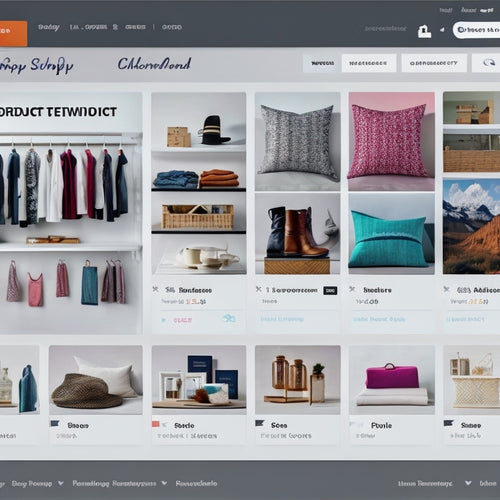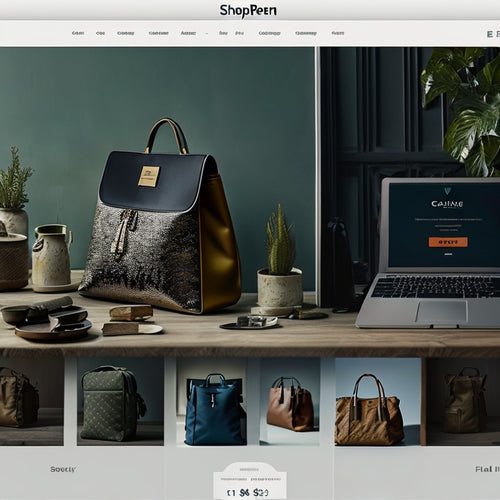
Transforming Learning: Docebo LMS Ecommerce Mastery
Share
To achieve ecommerce expertise with Docebo LMS, it is crucial to begin by constructing a thorough learning plan that outlines goals and results, integrates different course formats, and accommodates diverse learning preferences. Next, make the plan available for purchase online by clearly specifying the title, offering a comprehensive overview, and setting a competitive price. Lastly, kickstart the ecommerce initiative by configuring payment gateways, establishing tax rates, and formulating a customer engagement approach. By adhering to these steps, you can establish a transformative learning journey that boosts business outcomes. Further examination of these elements will unveil additional tactics for success.
Key Takeaways
• Define a comprehensive learning plan with clear objectives, structured courses, and varied learning methods to engage learners.
• Create a purchasable online learning plan with a clear title, overview, and attention-grabbing image, competitively priced for the target audience.
• Configure a secure payment gateway, set tax rates, and customize the storefront to establish a professional ecommerce platform.
• Implement a customer engagement strategy, including interactive elements, feedback, rewards, and excellent support services to build customer loyalty.
• Monitor payment gateway performance, provide multiple payment options, and utilize social media to promote the learning plan and enhance customer experience.
Building a Learning Plan
To create a thorough and effective learning plan in Docebo LMS, you must first define the learning objectives and outcomes. Then, structure the plan by combining e-learning, webinar, and classroom courses that cater to different learning styles and preferences. This approach enables creating a curriculum that is inclusive and engaging.
Implementing modules that incorporate various learning methods guarantees that learners receive a well-rounded education. By assigning prerequisites, you can make the plan sequential, and catch-up courses can be used to accommodate missed classroom sessions.
This strategic approach to building a learning plan guarantees that learners receive the knowledge and skills they need to succeed, while also ensuring a safe and effective learning environment.
Making It Purchasable Online
An important step in monetizing your learning plan is to make it available for purchase online, which involves assigning a title, description, and image to the plan, as well as setting a price and integrating a payment gateway. This enables online transactions, allowing customers to buy your learning plan securely. To ensure a seamless experience, consider the following key elements:
| Element | Description | Importance |
|---|---|---|
| Title | Clearly define the learning plan's title | High |
| Description | Provide a detailed overview of the plan | Medium |
| Image | Assign an attention-grabbing image to the plan | Medium |
| Price | Establish a competitive price for the plan | High |
| Payment Gateway | Integrate a safe payment gateway (e.g. PayPal) | High |
Launching Your Ecommerce Project
With your learning plan crafted and made purchasable, kickstart your ecommerce project by configuring the necessary settings to facilitate a seamless online buying experience. Guarantee a secure and reliable platform by integrating payment gateways, such as PayPal, Authorize.net, or Adyen, and setting up a payment method.
Additionally, implement effective marketing strategies to drive sales and customer engagement.
To launch your ecommerce project successfully:
-
Configure payment gateways to accept payments securely.
-
Set up tax rates to comply with regional regulations.
-
Customize your storefront to reflect your brand's identity.
- Develop a customer engagement strategy to encourage repeat business and positive reviews.
Frequently Asked Questions
How Do I Ensure Course Compatibility Across Different Devices and Browsers?
"Ensuring seamless learning, like a puzzle piece fitting perfectly, requires cross-platform compatibility. Achieve this by incorporating responsive design, conducting thorough browser testing, and optimizing for user experience to guarantee a smooth learning journey across devices and browsers."
Can I Customize the LMS Interface to Match My Brand Identity?
Yes, you can customize the LMS interface to match your brand identity through various customization options, ensuring branding consistency across the platform, including logo, color scheme, and layout modifications to create a seamless user experience.
What Kind of Customer Support Does Docebo Offer for Ecommerce Issues?
"Lost in e-commerce limbo? Fear not! Docebo's customer support offers troubleshooting tips, ecommerce strategies, and dedicated assistance for payment processing woes, ensuring your online learning marketplace operates smoothly and securely, backed by reliable customer service."
How Do I Handle Refunds or Course Cancellations in the Ecommerce System?
'When managing refunds or course cancellations, establish clear refund policies and course cancellation procedures. Define timelines, eligibility, and communication protocols to guarantee transparency and fairness, minimizing disputes and maintaining customer trust.'
Are There Any Integrations Available With Popular CRM Systems Like Salesforce?
Docebo LMS offers seamless integrations with popular CRM systems, including Salesforce, ensuring effortless data synchronization and enhanced customer management. The Salesforce integration enables automated user synchronization, course enrollment, and performance tracking, fostering a unified learning ecosystem.
Related Posts
-
Boosting Content Marketing SEO: Effective Internal Linking Strategies
Effective internal linking strategies are a crucial component of boosting content marketing SEO. Internal linking pl...
-

How Do I Add Unlimited Products to Shopify
This article explores the process of adding unlimited products to the Shopify platform, a popular e-commerce solutio...
-

Mastering Shopify Image Optimization for Enhanced Online Shopping
This article explores the topic of mastering Shopify image optimization for enhanced online shopping. It provides a ...

